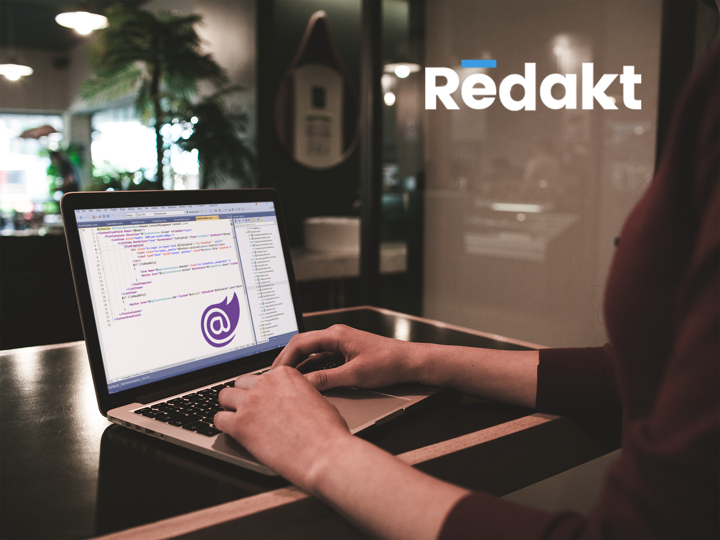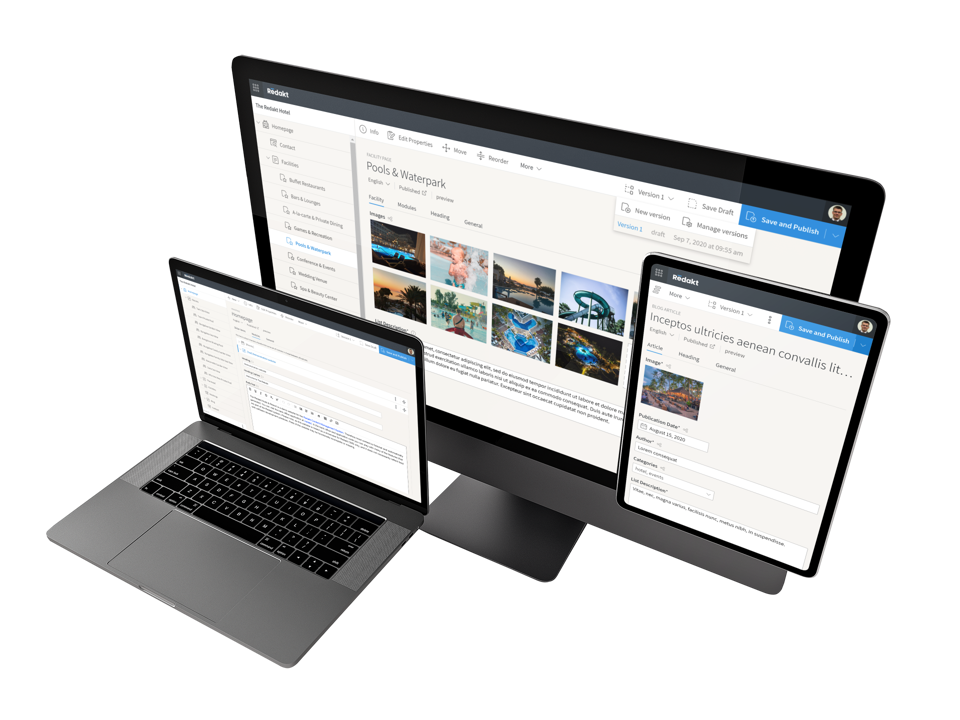Taking a Chance on Blazor: Redakt's Journey to Innovation
Jasper van der Sterren - December 21st, 2023

Back in 2019, during the development of Redakt's first version, we faced a critical decision in our technology strategy. Redakt CMS, designed to be an intuitive content management system, required a robust back-office application - essentially, the system's command center for content managers. We initially chose Angular for its client-side technology, a decision influenced by Angular's widespread popularity and proven track record as a leading single-page application (SPA) framework.
However, our path took an unexpected turn when we encountered Blazor, a new and promising web UI framework.
The Emergence of Blazor
Developed as a personal project by Steve Sanderson of Microsoft and unveiled at NDC Oslo in 2017, Blazor was initially based on an interpreted .NET CIL (Common Intermediate Language) runtime called DotNetAnywhere. Its potential, albeit with limited features, was immediately evident.
Blazor, introduced as an experimental project in early 2018, presented an intriguing proposition: building interactive web applications using C# and .NET. Up until that point, building the client-side of a single-page application traditionally relied on JavaScript, using frameworks such as Angular.
Gaining momentum within the developer community, Blazor evolved from an experimental project to a fully supported framework, with its inaugural release as part of the .NET Core 3.0 package in September 2019.
The Turning Point for Redakt
We hadn't paid much attention to Blazor before its release, as we were already committed to Angular. However, since we were developing Redakt CMS on the emerging .NET Core framework, we closely monitored all related developments. The inclusion of Blazor in .NET Core 3.0 caught our attention, leading us to explore its capabilities more thoroughly.
Blazor seemed well-suited for our vision of the Redakt back office. We aimed to create more than just a content management application; we envisioned it as a versatile web application framework. This framework was intended to not only implement the core functionalities of Redakt but also to enable agencies and system integrators to develop custom applications within our ecosystem, thereby facilitating digital transformation for their clients.
While Angular was a functional choice, it presented challenges, particularly in integrating front-end (Angular) and back-end (.NET Core) technologies. These distinct technologies required specialized developers, complicating the development process.
Redefining the Developer Role
For many IT organizations, software developers are often categorized as being either “front-end” or “back-end” developers. Front-end developers generally focus on programming that is executed on the browser (client-side), while back-end developers focus on programming that is executed on the server (server-side). Historically, programming languages and technological architecture have been very different between those two sides. (Unified technologies exist, most notably NodeJS, but not on the Microsoft technology stack.)
If you’ve seen job offers in the tech community, you’ve probably come across openings for “full-stack developers”. A full-stack developer is a person who is proficient in both client-side and server-side technologies. As somebody with firm roots in software engineering, my view on full-stack developers is skeptical. The disparity in technologies and approaches makes it rare to find individuals equally adept in both areas, especially in an enterprise software environment.
At Redakt, this division meant relying on specialized Angular and .NET Core developers. Consequently, our clients also needed expertise in these two domains to be able to use Redakt for custom back office application development.
The Strategic Shift to Blazor
Blazor offered a unified solution, using the same technology stack for both front-end and back-end development. This approach would streamline the development process for our team and our clients. Additionally, its component-based design aligned perfectly with our vision for an application development framework.
So, we decided to switch development of our back-office application over to Blazor. This decision was not taken lightly. It meant discarding substantial progress we had already made with Angular, which set us back quite a bit in our planning and incurred additional costs. However, we believed the potential benefits significantly outweighed these initial setbacks.
Adopting Blazor, especially given its novelty, was a gamble. The back-office application is a cornerstone of the Redakt system, and its success hinged on Blazor gaining traction in the tech community. There was no guarantee of continued development and support from Microsoft. The shadow of Microsoft's Silverlight, a precedent of a discontinued web client technology, loomed large.
Yet, our confidence in Blazor stemmed from its independence from client-side plugins, relying instead on universal web standards like HTML5 and WebAssembly.
Looking Ahead with Confidence
As we progressed with developing Redakt CMS and our back-office application, Blazor continued its steady development and gained popularity. The introduction of Blazor WebAssembly in 2020, enabling .NET code execution in the browser, marked another leap forward. Blazor Hybrid, included in .NET 7 in 2022, further expanded Blazor's capabilities across various platforms.
With the recent updates in .NET 8, Blazor has fully matured into a mainstream framework, symbolizing the unification of .NET, Blazor, and web development. There's no doubt about it, Blazor is here to stay, and Redakt will continue to use Blazor as a basis for our back office application and development framework.
The shift to Blazor, despite its initial costs, has proven to be a visionary move. It has enhanced our productivity and simplified the development process for our clients. As we continue our journey with Blazor, we remain excited about the future prospects of Redakt CMS.
Blazor is just one of the ways of how we try to be innovative and stay at the forefront of technology. Stay tuned for our upcoming news update, where we will share our plans for 2024 and beyond.
